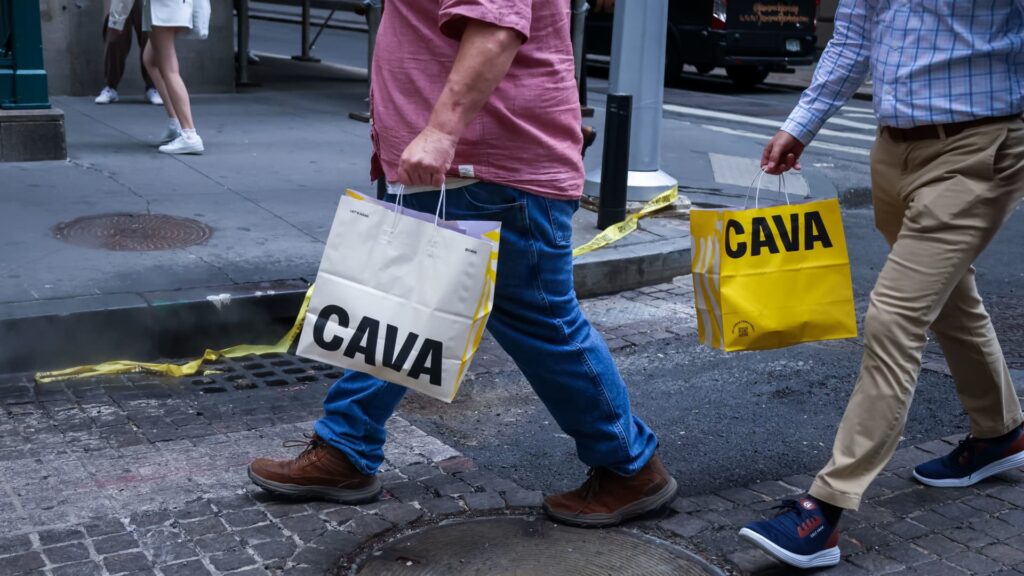Pedestrians carry Cava bags along Wall Street near the New York Stock Exchange (NYSE) in New York, US, on Monday, Aug. 18, 2025.
Michael Nagle | Bloomberg | Getty Images
Cava on Tuesday cut its full-year forecast for the second straight quarter as younger consumers visit its restaurants less frequently.
“When you look at different age demographics of fast casual, the 25- to 34-year-old consumer seems to be impacted a bit more than others, and fast casual tends to have a higher concentration of those consumers within their guest portfolio,” CFO Tricia Tolivar said in an interview, adding that the company saw demand fall as it entered the final quarter of the year.
She attributed the pullback from younger consumers to the demographic’s higher unemployment rate, plus a higher likelihood of facing the student loan repayments that resumed in the spring. Moreover, tariffs imposed by President Donald Trump “created an overall fog for the consumer,” according to Tolivar.
Fast-casual rival Chipotle Mexican Grill reported similar behavior from the same age cohort when it released its third-quarter earnings on Wednesday.
For 2025, Cava is now projecting that its same-store sales will increase 3% to 4%, down from its prior outlook of 4% to 6% growth. The company also expects lower restaurant-level profit margins, decreasing its projections to a range of 24.4% to 24.8%, down from the previous forecast of 24.8% to 25.2%.
Cava shares fell 5% in extended trading. As of Tuesday’s close, the stock has tumbled 54% this year.
Here’s what the company reported for the quarter ended Oct. 5 compared with what Wall Street was expecting, based on a survey of analysts by LSEG:
Earnings per share: 12 cents adjusted, in line with expectationsRevenue: $292.2 million vs. $292.6 million expected
Cava’s same-store sales rose 1.9%, falling short of Wall Street’s expectations of 2.8%, according to StreetAccount estimates. The chain’s traffic was flat compared with the year-ago period, but menu price increases and a higher mix of premium protein options boosted sales.
Despite slower same-store sales growth, Cava is gaining market share, according to Tolivar. That fact suggests that consumers who are 25- to 34-years old may be cooking at home or packing their lunches, rather than trading down to fast food.
“It appears that the consumer is being more thoughtful around their dining occasions, and how frequently they are doing that,” Tolivar said.
Unlike Chipotle and the broader restaurant industry, Cava is seeing higher same-store sales growth from low-income consumers; Tolivar credited the chain’s choice to keep its menu prices below inflation, presenting a more affordable option for budget-conscious consumers.
Cava’s net sales climbed 20% to $292.2 million, fueled by new restaurant openings. Since the third quarter of last year, Cava has opened a net 74 locations, bringing its total footprint up to 415, as of Oct. 5.
The Mediterranean chain reported fiscal third-quarter net income of $14.7 million, or 12 cents per share, down from $18 million, or 15 cents per share, a year earlier.
Excluding executive transition costs and other items, Cava earned 12 cents per share.

